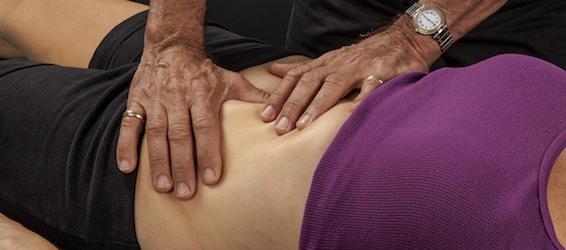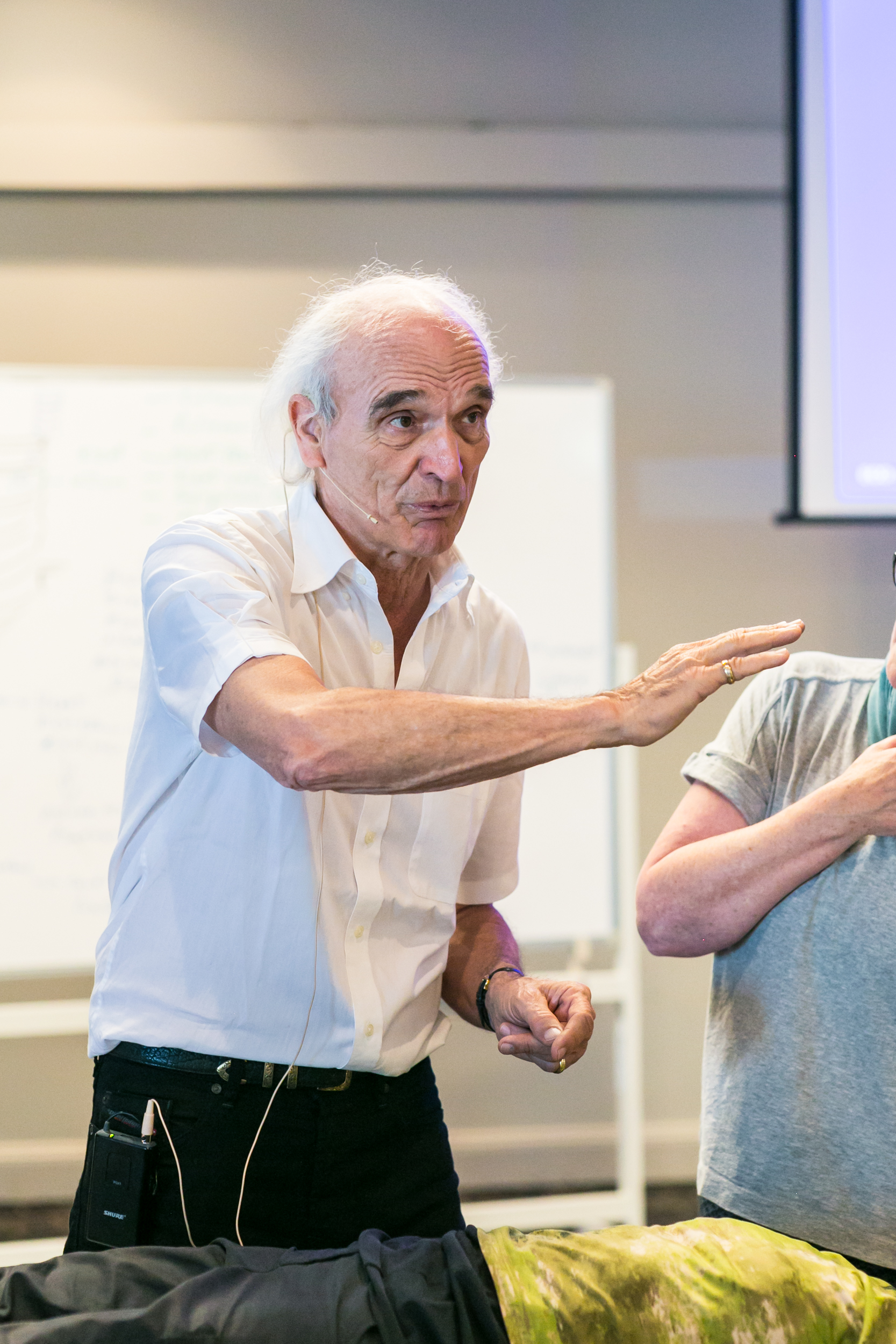 Visceral Manipulation is based on the specific placement of soft manual forces to encourage the normal mobility, tone and motion of the viscera (internal organs) and their connective tissues. By using specific techniques, practitioners can evaluate how abnormal forces interplay, overlap and affect the normal body forces at work. The goal is to help the body’s normal forces remove abnormal effects, whatever their sources. Effects can be global, encompassing many areas of bodily function. These gentle manipulations can potentially improve the functioning of individual organs, the systems the organs function within, and the structural integrity of the entire body.
Visceral Manipulation is based on the specific placement of soft manual forces to encourage the normal mobility, tone and motion of the viscera (internal organs) and their connective tissues. By using specific techniques, practitioners can evaluate how abnormal forces interplay, overlap and affect the normal body forces at work. The goal is to help the body’s normal forces remove abnormal effects, whatever their sources. Effects can be global, encompassing many areas of bodily function. These gentle manipulations can potentially improve the functioning of individual organs, the systems the organs function within, and the structural integrity of the entire body.
Practitioners using Visceral Manipulation assess the dynamic functional actions as well as the somatic structures that perform individual activities. They also evaluate the quality of the somatic structures and their functions in relation to an overall harmonious pattern, with motion serving as the gauge for determining quality.
Due to the delicate and often highly reactive nature of the visceral tissues, precisely directed gentle force reaps the greatest results. As with other methods of manipulation that affect the body deeply, Visceral Manipulation works only to assist the forces already at work. Because of that, trained practitioners can be sure of benefiting the body rather than adding further injury or disorganisation.

Development of Visceral Manipulation by Jean-Pierre Barral
Methods such as Visceral Manipulation have been part of the medicinal cultures in Europe and Asia since prerecorded times. Indeed, manual manipulation of the internal organs has long been a component of some therapeutic systems in Oriental medicine. So it’s no surprise that practitioners in many parts of the world have incorporated manipulations designed to work with the internal organs and their functions.
Jean-Pierre Barral first became interested in biomechanics while working as a registered physical therapist of the Lung Disease Hospital in Grenoble, France. That’s where he met Dr. Arnaud, a recognized specialist in lung diseases and a master of cadaver dissection. Working with Dr. Arnaud, Barral followed patterns of stress in the tissues of cadavers and studied biomechanics in living subjects. This introduced him to the visceral system, its potential to promote lines of tension within the body, and the notion that tissues have memory. All this was fundamental to his development of Visceral Manipulation. In 1974, Barral earned his diploma in osteopathic medicine from the European School of Osteopathy in Maidstone, England. Working primarily with articular and structural manipulation, he began forming the basis for Visceral Manipulation during an unusual session with a patient he’d been treating with spinal manipulations.
During the preliminary examination, Barral was surprised to find appreciable movement. The patient confirmed that he felt relief from his back pain after going to an “old man who pushed something in his abdomen.” This incident piqued Barral’s interest in the relationship between the viscera and the spine. That’s when he began exploring stomach manipulations with several patients, with successful results gradually leading him to develop Visceral Manipulation. Between 1975 and 1982, Barral taught spinal biomechanics at England’s European School of Osteopathy. In collaboration with Dr. Jean-Paul Mathieu and Dr. Pierre Mercier, he published Articular Vertebrae Diagnosis.
Using his work with Dr. Arnaud as a foundation, Barral continued to investigate how the thickening of tissues in the body creates areas of greater mechanical tension that, in turn, pull on surrounding tissues. That discovery led him to the theoretical and practical development of visceral listening techniques.
Barral’s development of manual thermal evaluation began in 1971 during another treatment session. While treating a female patient, he felt a strong emanation coming from her mammary gland. He learned she had been operated on for a tumor in that area. Researching this phenomenon with other patients, he discovered just how accurately areas of stress in the body could be located by palpating the associated energy, which proved to be thermal. Consequent research has added manual thermal evaluation to many practitioners’ evaluation tools.
With the help of Dr. Serge Cohen, a Grenoble radiologist, Barral also documented changes in the viscera before and after manipulation. They employed x-ray fluoroscopy and ultrasound to record changes in position and motion, as well as fluid exchange and evacuation. Later they conducted additional research with a team of electrical engineers and technicians using infrared emissions from the body.
Jean-Pierre Barral began teaching Visceral Manipulation in the United States in 1985. Since then he has trained a team of international teachers that teach Visceral Manipulation seminars around the world. He has also authored numerous textbooks for healthcare professionals, including “Visceral Manipulation”, “Visceral Manipulation II”, “Urogenital Manipulation”, “The Thorax”, and “Manual Thermal Evaluation”. With Alain Croibier, D.O. he also co-authored three books: “Trauma: An Osteopathic Approach”, “Manual Therapy for the Peripheral Nerves”, and “Manual Therapy for the Cranial Nerves”. Jean-Pierre Barral has also authored a book for the general public, “Understanding the Messages of Your Body”, which discusses the link between our organs and our emotions.
Barral continues to research and develop manual therapy techniques while maintaining a full clinical practice in France. Thanks to his pioneering work, candidates in several European countries must now pass a rigorous test in Visceral Manipulation to earn a diploma in osteopathy.



